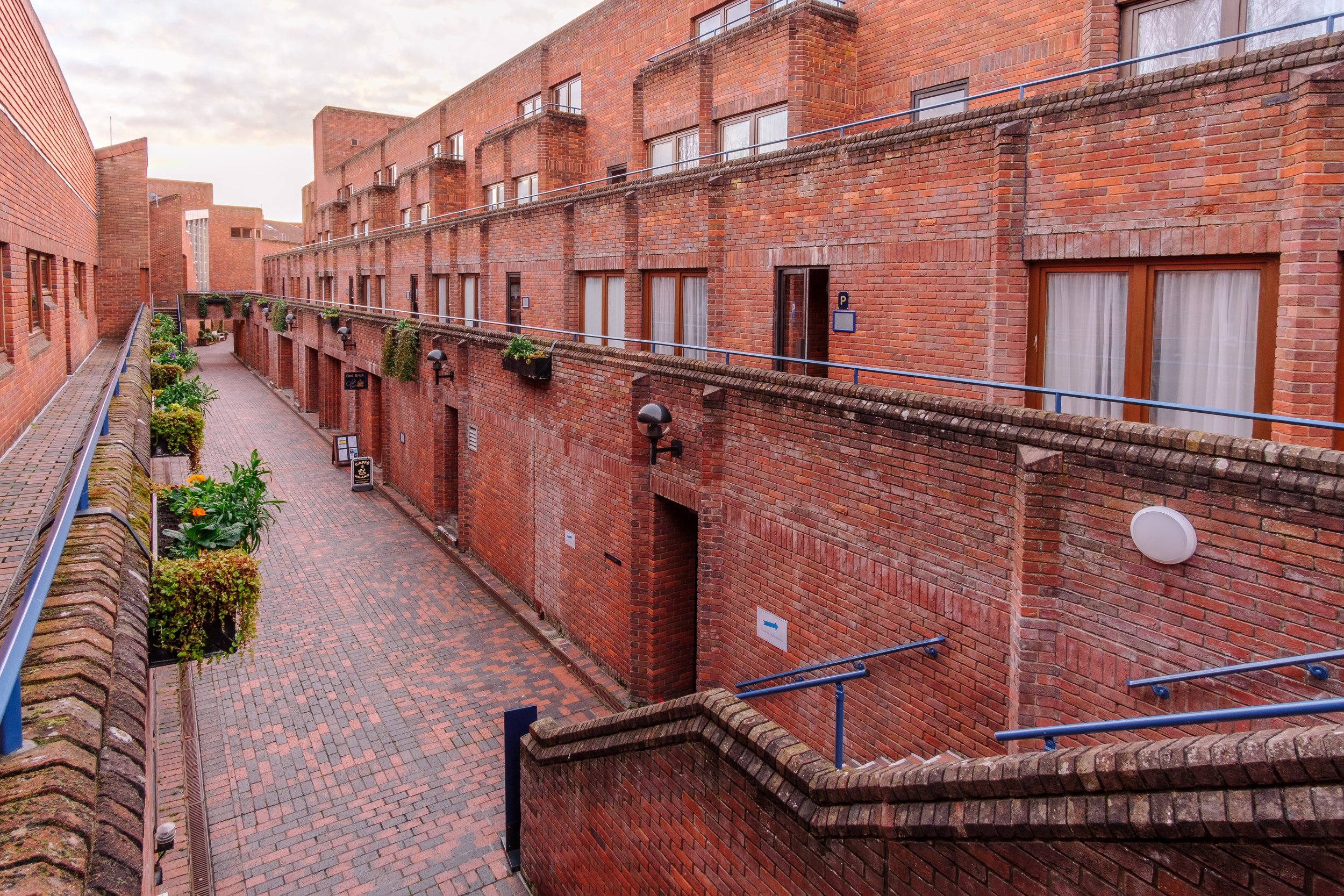
OUR HISTORY
Robinson College is a constituent college of the University of Cambridge.
Founded in 1977, it is unique in having been always intended for undergraduate and postgraduate students of all sexes.
Robinson sits in a large, tranquil site in West Cambridge. Adjacent to Clare Hall, Trinity College’s Burrell’s Field and the University Library, it occupies a mid-point between the West Cambridge and Sidgwick Sites, and is only a 5 minute walk from the centre of the City.
Our buildings
Robinson is unique in both its conception and construction.
The main college building was designed by Architects Isi Metzstein and Any MacMillan, then partners of the leading Glasgow architectural firm Gillespie, Kidd & Coia. The pair won the architectural competition for the college’s design in 1974, having completed work on extensions to Wadham College, Oxford, and a large number of projects across their native Scotland.
Metzstein and MacMillan’s long-honed expertise in designing religious buildings is reflected in one of the most impressive spaces in college, the chapel, which features a beautiful stained-glass window co-designed by artist John Piper and Patrick Reyntiens, who together designed the famous windows at Coventry and Liverpool Metropolitan Cathedrals.
Following the modernist trope of the ‘inhabited wall’, our buildings also reference traditional features of collegiate architecture in Cambridge, as seen in the Gatehouse, which resembles that at Queens’ or Trinity Colleges. Other key points of reference are: the Glasgow Tenement House, reflected in the design of the rear of the college, which faces the gardens; and the work of Scottish designer Charles Rennie Mackintosh, whose love for rectilinear shapes infuses the beautiful woodwork in the college library, in particular. A genuine Mackintosh Willow Chair sits in the library.
As architectural historian Otto Saumarez-Smith points out: ‘Like the new foundations of the period,” which had seen the creation of six new colleges from the mid-1950s including Churchill College, Clare Hall, Darwin College, Fitzwilliam College, Wolfson (originally University) College, and New Hall (now Murray Edwards), Robinson “demonstrates how a long-established building type - the Cambridge College - could be reinterpreted within the wider context of a rapidly changing university and a shifting architectural landscape.”
Bridging the gap between modernism and the postmodernism of the 1980s, Robinson is an architectural gem. This was formally recognised when in 2022, it was awarded Grade II* Listed Status.
Other college buildings, such as Thorneycreek House and Cottage, date to the 1890s and the early Edwardian Period. In 1882, Fellows of the University of Cambridge were allowed to marry for the first time; the land lying to the west of the city, owned predominantly by the University’s colleges, were sold to Fellows as building plots for the construction of family homes. This gave rise to the wide variety of styles of building to be seen along Adams and Sylvester Roads and throughout West Cambridge.
Built in an Early Modernist style in the 1930s, 2 Sylvester Road (named ‘Postan’) was designed by Henry Castree Hughes of Cambridge-based firm, Hughes and Bicknell. Prominent examples of Hughes’s work built in the famed ‘International Style’ are the Mond Building (on the New Museums Site), Peterhouse’s Fen Court, and several groundbreaking private houses on nearby Wilberforce and Conduit Head Roads. 2 Sylvester Road is one of the first modernist buildings to have been designed and constructed in Cambridge - a city famed for its links to the movement.
The College Gardens
Robinson is famed for having some of the most extensive and beautiful gardens of any college of the University.
Dating back to the late Victorian and early Edwardian period, the current gardens have their origin in those individual gardens that once belonged to the 10 private houses that previously occupied the College site, many of which are still in use today.
Like Fitzwilliam, Darwin and Murray Edwards Colleges, Robinson’s links to the Darwin family have shaped its gardens: until 1970, 3 Sylvester road was occupied by Lady Barlow, a grandchild of Charles Darwin and cousin of the artist and member of the Bloomsbury Group, Gwen Raverat, well-known for her memoir of a Cambridge Childhood, Period Piece (1952), and her wood engravings. A botanist, Barlow brought some rare species of tree to the gardens, which continue to stand today!





